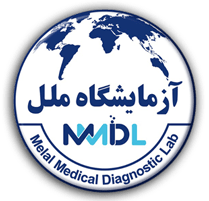Gastrointestinal Disease
- Colorectal Disease
Celiac Disease
Inflammatory Bowel Disease (IBD)
- Gastric Disease
Gastrointestinal Stromal Tumors (GISTs)
Zollinger-Ellison Syndrome (Gastrinoma)
- Hepatic Disease
Acute Viral Hepatitis
Alpha-1-Antitrypsin Deficiency (AAT)
Autoimmune Hepatitis
Hepatocellular Carcinoma (HCC)
Primary Biliary Cholangitis (PBC)
- Pancreatic Disease
Neuroendocrine Tumors
Glucagonoma
Insulinoma
Neuroendocrine Tumors of the Gastrointestinal Tract, Lung, and Thymus – Carcinoid Tumors
Somatostatinoma
Vasoactive Intestinal Polypeptide Secreting Tumor – VIPoma
Zollinger-Ellison Syndrome (Gastrinoma)
- Acute Pancreatitis
Autoimmune Pancreatitis
Chronic Pancreatitis
Diabetes Mellitus
Hyperinsulinemic Hypoglycemia
Eosinophil-Related Disorders – Eosinophilia
Nutritional Assessment
- Colorectal Disease
Celiac Disease
Inflammatory Bowel Disease (IBD)
- Celiac Disease:
Definition:
Celiac disease is usual inflammatory disease of the small intestine, triggered by an immune response to digestion of gluten and villi are injured. so, the intestine can’t absorb food nutrients. This can result to bone loss of bone density, infertility or neurological disease. Diagnosis is pathology testing based on duodenal villous atrophy, and most patients have circulating antibodies against tissue transglutaminase.
- Total serum IgA
- Tissue transglutaminase (tTG) antibodies (IgA, IgG)
- IgA Endomysial antibody (EMA)
- Deaminated gliadin peptide (DGP IgA and IgG)
- Antiactin (F-Actin) IgA: Antiactin (F-actin) IgA testing by enzyme-linked immunosorbent assay (ELISA) should be performed in biopsy-confirmed cases of CD and can provide information about prognosis.
- Genetic test: for human leukocyte antigens (HLA-DQ2 and HLA-DQ8) can be useful to rule out celiac disease.

- Inflammatory Bowel Disease (IBD)
Definition:
IBD is an inflammatory disorder in digestive tract. Two main and common types of disease are Crohn’s Disease and Ulcerative Colitis. In UC, long inflammation causes sores or ulcers in the large intestine, colon and rectum. CD is identified by inflammation in digestive tract which sometimes develops deep into intestinal tissues. Patients affected by these diseases experience abdominal symptoms, including diarrhea, abdominal pain, bloody stools, fatigue, weight loss and vomiting.
Panel tests:
Autoantibodies
· ANCA test: Anti-neutrophil cytoplasmic antibody (ANCA) is classified according to two staining patterns:
cytoplasmic ANCA (cANCA): in which the entire cytoplasm is stained
perinuclear ANCA (pANCA): in which the area around the nucleus is stained.
pANCA (Perinuclear anti-neutrophil cytoplasmic antibody). More common with UC, it is found in about 60% to 80% of people with UC but only about 5% to 15% of people with CD.
Antimicrobial antibodies:
Anti-Saccharomyces cerevisiae antibody (ASCA),
· Anti-CBir1 (Clostridium species antibodies).
· Anti-Omp C (Escherichia coli antibodies).
· Anti-I-2 (Pseudomonas fluorescens antibodies)
Other tests:
Calprotectin
Stool exam and stool culture
Lactoferrin
CBC with automated differential
CRP and ESR
Albumin
ALT and AST
References:
1. Feuerstein JD, Nguyen GC, Kupfer SS, Falck-Ytter Y, Singh S, American Gastroenterological Association Institute Clinical Guidelines Committee. American Gastroenterological Association Institute Guideline on Therapeutic Drug Monitoring in Inflammatory Bowel Disease. Gastroenterology. 2017; 153(3): 827-834. PubMed
2. World Gastroenterology Organisation Global Guidelines – Celiac Disease. World Gastroenterology Organisation. Milwaukee, WI [Accessed: Jan 2018]

